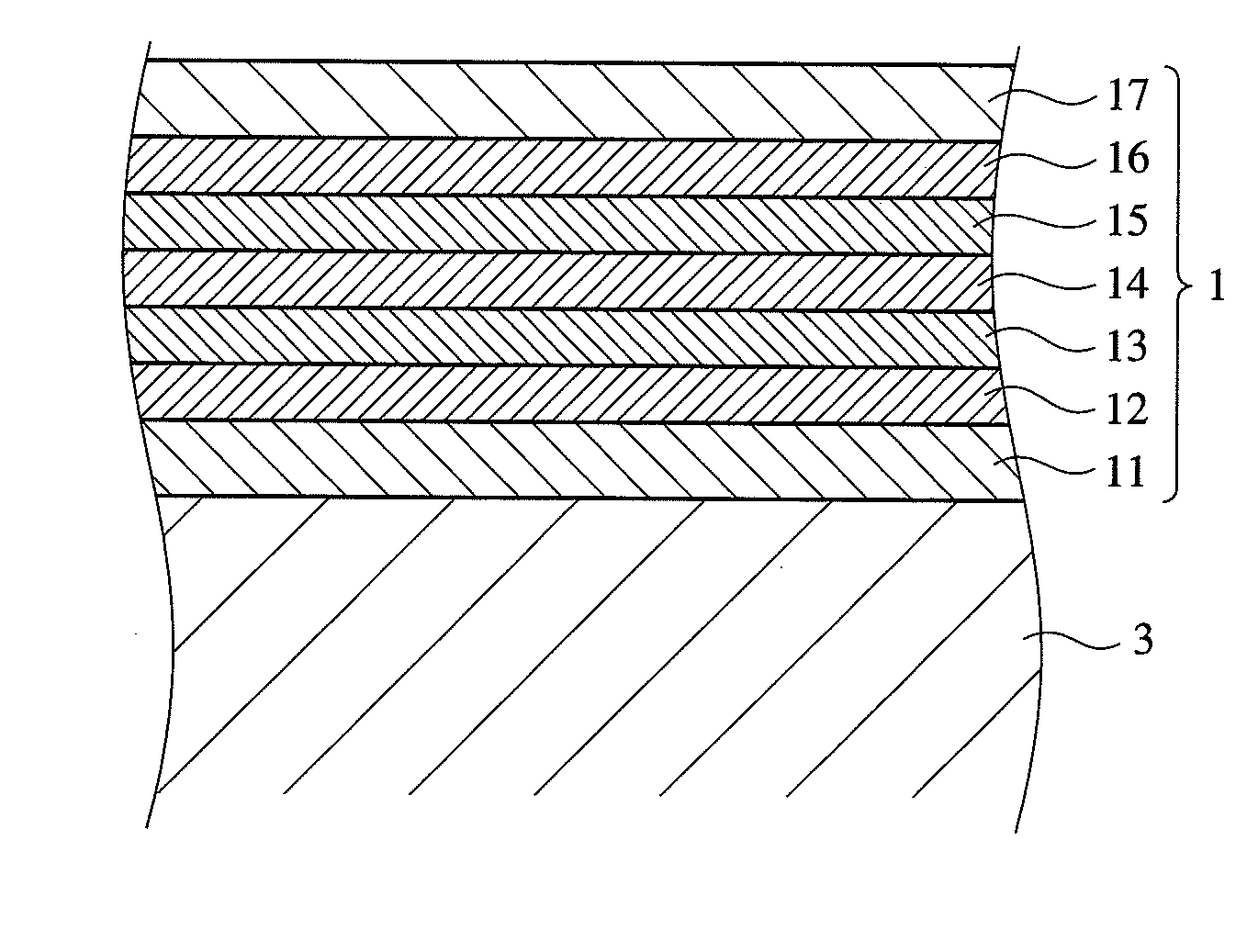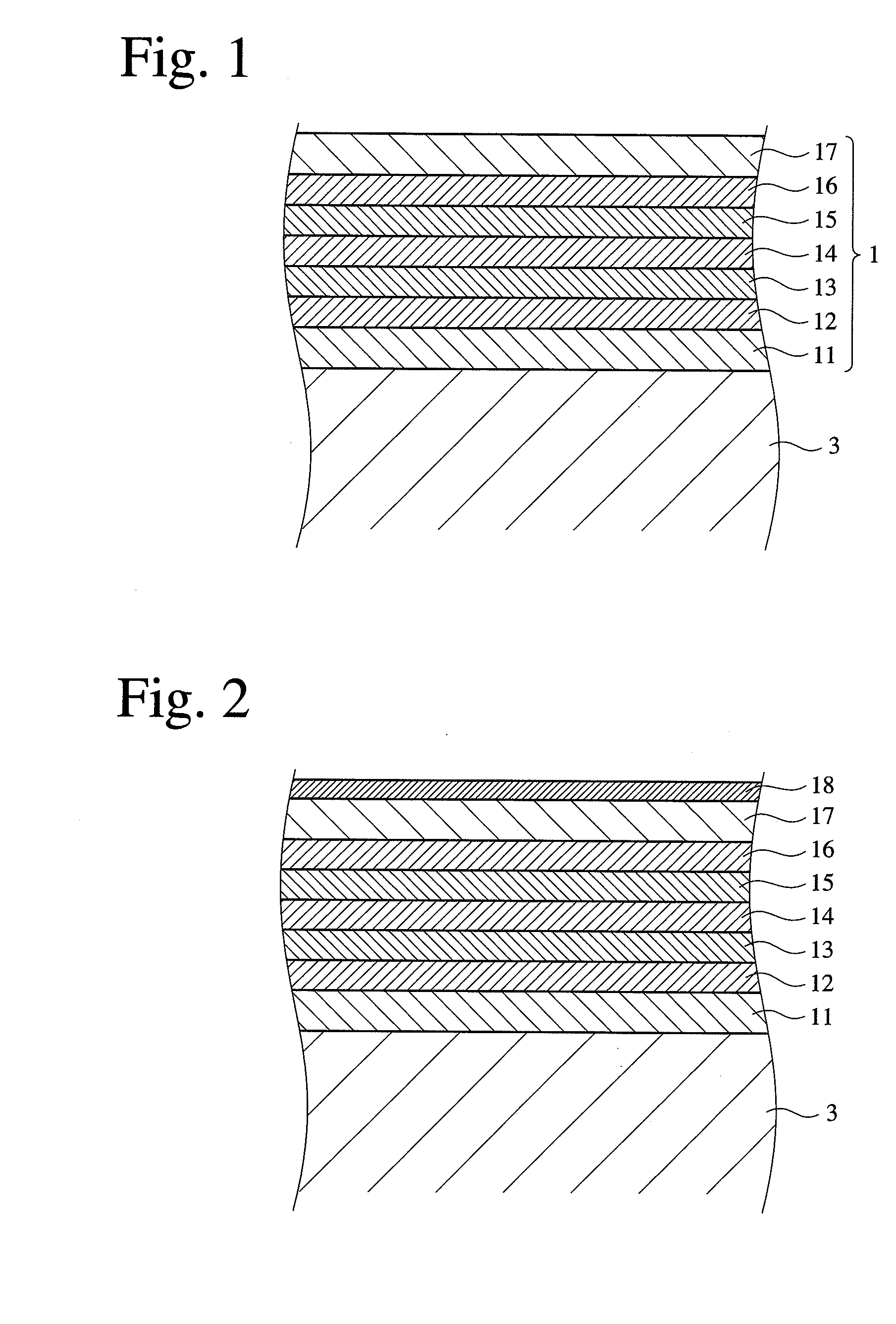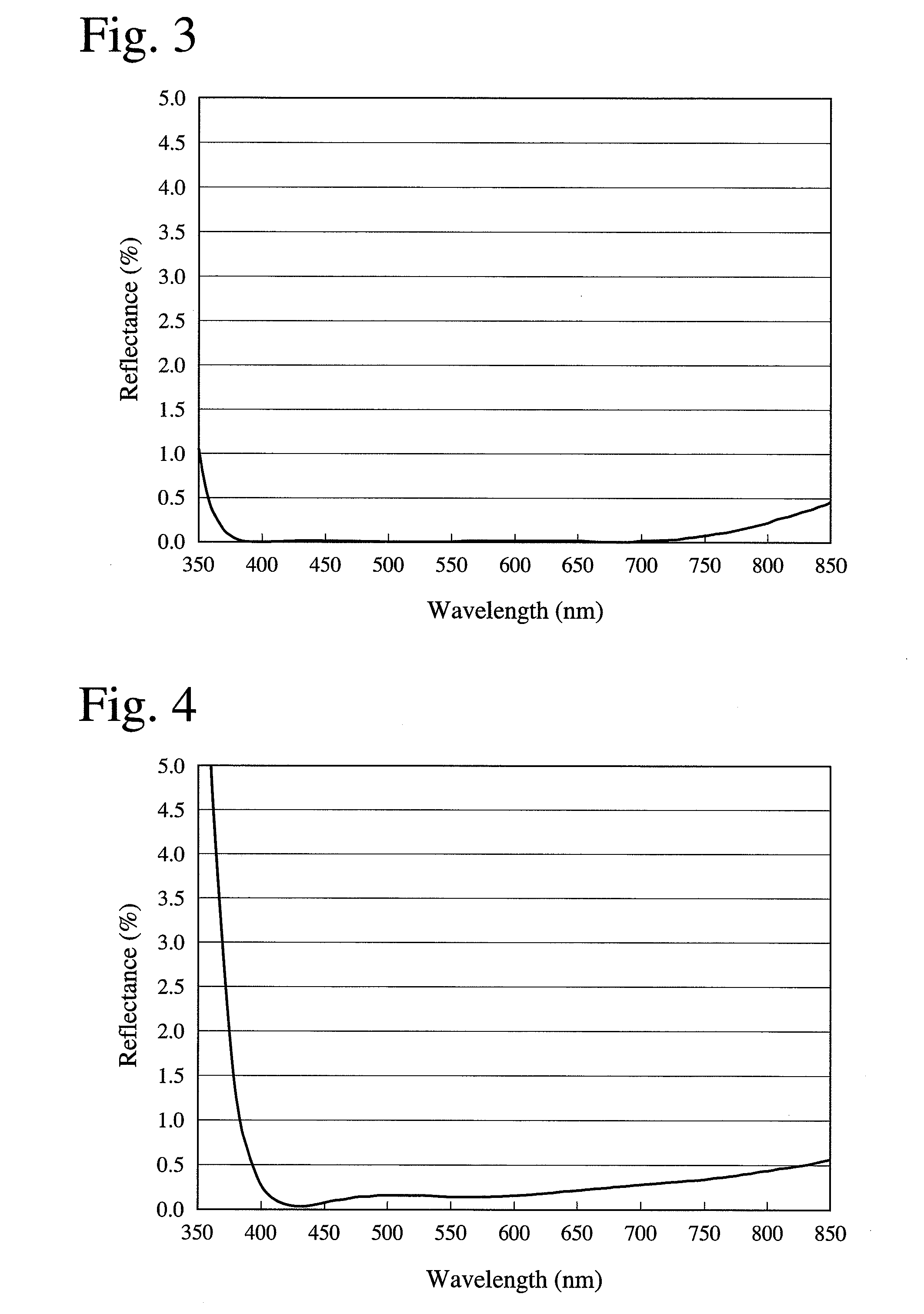Anti-reflection coating, optical member, exchange lens unit and imaging device
an anti-reflection coating and lens technology, applied in the field of anti-reflection coating, optical member, exchange lens unit and imaging device, can solve the problems of large reflection loss, reduced contrast, resultant photographs with flare and ghosting
- Summary
- Abstract
- Description
- Claims
- Application Information
AI Technical Summary
Benefits of technology
Problems solved by technology
Method used
Image
Examples
example 1
[0121]An anti-reflection coating 1 having the layer structure shown in Table 1 was produced by the following steps. The refractive index of each layer was measured with light having a wavelength of 550 nm.
[0122][1] Formation of First to Sixth Layers
[0123]Using the apparatus shown in FIG. 7, the first to sixth layers shown in Table 1 were formed on an optical lens of LF5 by an electron-beam vacuum vapor deposition method at an initial degree of vacuum of 1.2×10−5 Torr and a substrate temperature of 230° C.
[0124][2] Formation of Seventh Layer
[0125]A silica aerogel layer as the seventh layer was formed by a sol-gel method comprising the following steps.
[0126](2-i) Preparation of Wet Silica Gel
[0127]After 5.21 g of tetraethoxysilane and 4.38 g of ethanol were mixed, 0.4 g of hydrochloric acid (0.01 N) was added, and stirring was conducted for 90 minutes. With 44.3 g of ethanol and 0.5 g of ammonia water (0.02 N) added, stirring was conducted for 46 hours, and then this mixed solution wa...
example 2
[0134]An anti-reflection coating having the layer structure shown in Table 2 was formed in the same manner as in Example 1.
TABLE 2RefractiveOpticalNo.MaterialIndexThickness (nm)SubstrateLF51.584—First LayerAl2O31.650200.0Second LayerTa2O5 + Y2O3 + Pr6O112.05050.0Third LayerMgF21.38052.5Fourth LayerTa2O5 + Y2O3 + Pr6O112.05060.0Fifth LayerMgF21.38090.0Sixth LayerTa2O5 + Y2O3 + Pr6O112.05025.0Seventh LayerSilica Aerogel1.150130.0MediumAir1.000—
example 3
[0135]An anti-reflection coating having the layer structure shown in Table 3 was formed in the same manner as in Example 1.
TABLE 3RefractiveOpticalNo.MaterialIndexThickness (nm)SubstrateKF31.466—First LayerAl2O31.650147.5Second LayerZrO2 + TiO22.11040.4Third LayerSiO21.46247.1Fourth LayerZrO2 + TiO22.11053.9Fifth LayerSiO21.46290.3Sixth LayerZrO2 + TiO22.11021.1Seventh LayerSilica Aerogel1.150143.0MediumAir1.000—
PUM
| Property | Measurement | Unit |
|---|---|---|
| wavelength | aaaaa | aaaaa |
| wavelength range | aaaaa | aaaaa |
| reflectance | aaaaa | aaaaa |
Abstract
Description
Claims
Application Information
 Login to View More
Login to View More - R&D
- Intellectual Property
- Life Sciences
- Materials
- Tech Scout
- Unparalleled Data Quality
- Higher Quality Content
- 60% Fewer Hallucinations
Browse by: Latest US Patents, China's latest patents, Technical Efficacy Thesaurus, Application Domain, Technology Topic, Popular Technical Reports.
© 2025 PatSnap. All rights reserved.Legal|Privacy policy|Modern Slavery Act Transparency Statement|Sitemap|About US| Contact US: help@patsnap.com



